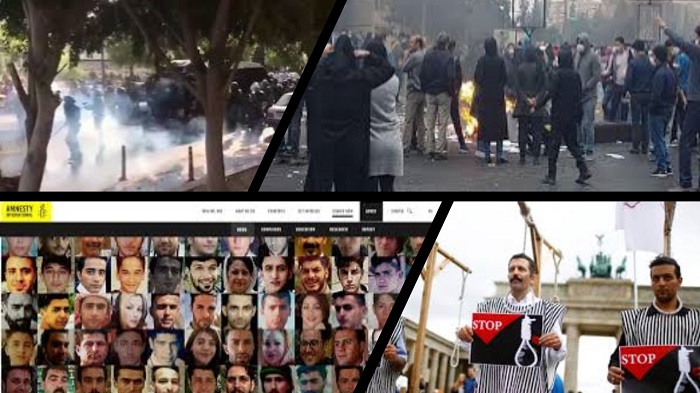
The MEK confirmed that more than 1,500 people were killed by security forces in Iran.
On Wednesday, May 20, Amnesty International published a new report about the Iranian regime’s use of lethal force against protesters during the November 2019 Uprisings. Amnesty’s comprehensive report “concluded that the security forces’ use of lethal force against the vast majority of those killed was unlawful,” according to a statement released by the international human rights organization.
#Iran expert: Concern over social unrest led to easing of quarantine measures#Covid_19 https://t.co/lgIgB9qSsY
— People's Mojahedin Organization of Iran (PMOI/MEK) (@Mojahedineng) May 21, 2020
No Imminent Threat
“In almost all protests that took place between 15 and 19 November, there is no evidence that people were in possession of firearms or that they posed an imminent threat to life that would have warranted the use of lethal force, according to research, including video analysis, conducted by Amnesty International. The organization is aware of two exceptions in one city on 18 November where gunfire was exchanged between protesters and security forces,” stressed the statement from Amnesty International.
“The fact that so many people were shot while posing no threat whatsoever shows the sheer ruthlessness of the security forces’ unlawful killing spree,” said Philip Luther, Amnesty International’s Research and Advocacy Director for the Middle East and North Africa
The report describes the intentional uses of lethal force by regime security forces. “According to information gathered by Amnesty International, in all but four cases the victims were shot dead by Iranian security forces – including members of the Revolutionary Guards, paramilitary Basij forces and the police – firing live ammunition, often at the head or torso, indicating that they were shooting to kill. Of the remaining four victims, two reportedly suffered fatal head injuries after being beaten by members of the security forces. Another two were recorded as having suffocated from tear gas,” stated the report.
An Official Cover-Up
Amnesty researched the deaths of 304 protesters for its report. Its statement on the report read: “For each of the 304 deaths, Amnesty International has been able to gather credible information indicating the place, circumstances of the deaths recorded, and their exact or approximate date. The victims recorded include 10 women, 236 men, and at least 23 children; the sex of the remaining 35 victims remains unknown to Amnesty International. In 239 cases, the victim’s name was identified.”
Amnesty acknowledged that the regime has still not released an official death toll and that it has engaged in a months-long cover-up and propaganda campaign, further obscuring efforts to seek justice for the victims. “The state’s refusal to reveal the truth about the death toll, conduct criminal investigations, and hold those responsible for ordering and carrying out these killings to account only adds to the heartache,” said Philip Luther.
Amnesty International also wrote that it “believes the real number of deaths is higher. The organization is aware of scores of additional cases reported by activists, but assessed that it does not yet have sufficient reliable details to record these possible deaths in its figures.”
The MEK Iran confirmed that more than 1,500 people were killed by security forces and another 12,000 were arrested during the November 2019 protests. The MEK Iran obtained these numbers from interviews with family members, death certificates, and local burial notices. Names, ages, and locations were cross-checked to avoid duplication.
Absence of Accountability
Philip Luther emphasized that the “prevailing impunity afforded to the security forces allows the recurrence of lethal force to crush dissent. In the absence of any meaningful prospect for accountability at the national level, we reiterate our call to members of the UN Human Rights Council to mandate an inquiry into the killings, and identify pathways for truth, justice, and reparations.”
People of #Iran are taking to the streets to voice their discontent with the #Iranian regime People from all across the country from very different backgrounds have joined together to make the Iranian regime hear their dissenthttps://t.co/ABEVWHfFt0#MEK #COVID19 @USAdarFarsi pic.twitter.com/iXAcna8VTz
— MEK Iran (Mujahedin-e Khalq) (@MEK_Iran) May 16, 2020
The November Uprisings were triggered by a hike in gas prices but almost immediately shifted to widespread calls for regime change. The government’s brutal response to the protests worsened social unrest and brought an already faltering regime to the brink of collapse. More protests erupted in January after the regime attempted to cover up its responsibility in the downing of a Ukrainian airliner.
The regime entered the coronavirus pandemic in a weakened state. It is unlikely to survive its own incompetence and callousness.
